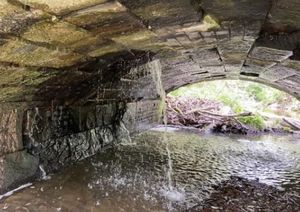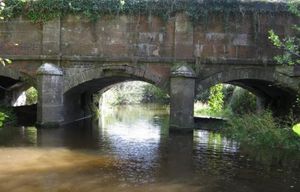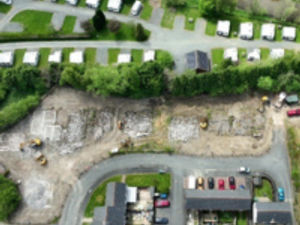Green light for plans to repair aqueduct as part of £14 million canal restoration near Newtown
Repairs and improvements to a historic aqueduct near Newtown have been given the go ahead by county planners.
Watch more of our videos on ShotsTV.com
and on Freeview 262 or Freely 565
Last autumn, the Canal and River Trust lodged a listed building consent planning application with Powys County Council for “repairs and rehabilitations” to be made to the Grade II listed Aberbechan Aqueduct.
The repairs to the structure, which goes over River Severn tributary Bechan Brook, is a key strand in the Montgomery Canal Restoration programme which has received around £14 million from the former UK Government’s Levelling Up Fund.
The aqueduct is a three span masonry structure, which is 24 metres long and eight metres wide.
The internal trough, which would be filled by water to allow canal barges to travel over Bechan Brook, is formed of concrete and brick and is 32 metres long, 2.6 metres wide and 1.5 metres deep.
The aqueduct dates from the construction of the Western Branch of the canal between 1816 and 1821, which was engineered by Josiah Jessop.
In 1859 the original aqueduct partly collapsed and was rebuilt reusing the collapsed masonry.
Since then, patching repairs have been conducted throughout the structure to repair damage caused by floodwaters and leaks.

A heritage impact statement by Emma Adams and partners explained the significance of the aqueduct and proposed the work to be done to fix it.
Ms Adams said: “The structure has aesthetic value as an example of a comparatively small and simple canal aqueduct, albeit one incorporating certain features of classical detail and proportion, built of local materials which illustrates the manner in which during canal construction of the early 19th century.
“The incorporation of high quality design and detail were a fundamental part of industrial design, being delivered by civil engineers, even in comparatively remote rural locations.”
She explained that masonry and brickwork repairs are required to stabilise the aqueduct structurally.
Part of this included waterproofing the “internal brick core” which would help preserve the aqueduct.
Before work on the west end of the aqueduct can happen, this part would need to be “stabilised” in case the structure collapses.
Ms Adams said: “These repairs will be carried out by appropriate competent craftsmen in accordance with the trust’s heritage guidance and specifications.”

Abermule with Llandyssil community council said that it “supports” the application.
Powys council’s built heritage officer, Dr Sam Johnson said: “The application demonstrates that the character and historic fabric would not be adversely affected by the proposed works and as such is in line with relevant (planning) policy.”
His decision was to approve the application but had to refer the application to Cadw, the Welsh Government’s historic environment service.
Cadw said that they have “considered” the proposals and that they don’t need to be referred to the Welsh Government for approval.
This means that responsibility for the decision is passed back to the council and the approval recommendation comes into force.
When fully completed it is hoped that the restoration of the Montgomery Canal will provide long term economic, cultural, wellbeing and recreational benefits for local communities.





